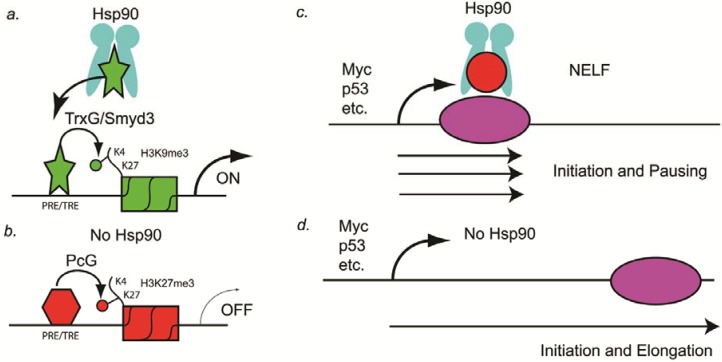Figure 1.
Hsp90 as a genetic and epigenetic capacitor for phenotypic variation. (A) In a non-stressed cell, Hsp90 binds to the H3K4 histone methyltransferase (Trx or Smyd3) and activates the enzymatic activity. Chromatin of PRE/TREs carrying this active histone mark is open for transcriptional activation; (B) In a stressed cell, Hsp90 is inactive and Trx is not activated. Consequently, PRE/TREs are occupied by PcG complex proteins, one of which is a H3K27 histone methyltransferase (PcG). Chromatin thus modified by this inactive histone mark leads to transcriptional repression; (C) In the presence of Hsp90, transcription pauses at as many as 30% of the genes, including the oncogene Myc and the tumor suppressor gene p53. Pausing is mediated by NELF (red circle), which is a target of Hsp90; (D) In the absence of Hsp90, NELF no longer induces pausing and transcriptional elongation occurs. Elongation of tumor suppressor genes such as p53 in cancer cells can lead to stasis or apoptosis, especially in combination with other anti-cancer drugs.

